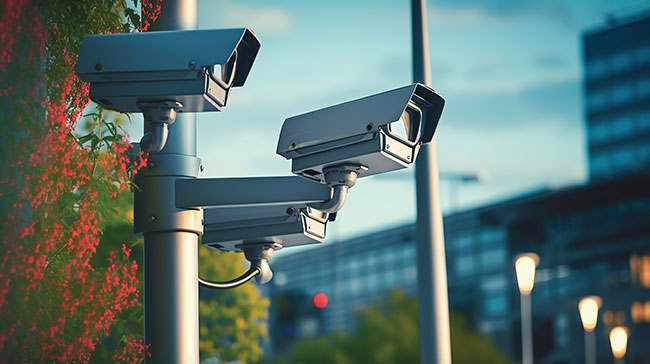
Features
Business
Regulations
Security
Securing the cannabis sector in Canada
Experts in security, GardaWorld and JH & Associates, weigh in on the industry’s needs
April 24, 2024 By Matt Jones
 Photo: © PRI/ Adobe Stock / Generated with AI
Photo: © PRI/ Adobe Stock / Generated with AI Any business must consider safety and security; however, the exact security requirements of those businesses vary greatly depending on the type of business. Cannabis is no different, with the industry having its own security needs as well as security standards, which have been prescribed by regulators and authorities. But what are the intricacies of providing security for the cannabis sector? Grow Opportunity spoke with some experts in the field to find out.
GardaWorld: Guards meets tech
“I think the industry at large is risk-based and that drives a number of levels of security, enhancement protection, target hardening,” says Doug Sales, GardaWorld’s senior director commercial systems sales for Ontario and the West. “In the Greater Toronto Area, where you’ve got a large manufacturing and/or distribution center, just the sheer scale of the building that that would be in, the compliance with the prescribed security requirements makes it a little bit more of a harder target and a harder solution.”
Sales says that when facilities are in outlying or remote areas, smaller towns or even smaller cities, there is a much lower level of risk perceived. So, while you will still find electronic security systems in those areas, they tend to be less sophisticated. There will still be security cameras and an intrusion system, but there may just be a door strike for access control.

GardaWorld senior director of commercial systems sales for Ontario and West, Doug Sales, says that security targets for the cannabis sector are still fairly stringent, but compliance does seem to be there.
Sales notes therefore that the security needs of the industry will scale – a 300,000 square foot facility will need 100 cameras, while a 400,000 square foot facility would need more. With a mind to both internal and external risks, GardaWorld would provide devices for screening employees, such as metal detectors or x-ray technology. Access control is also crucial.
“You’ve got to be able to audit the people trail so [you can keep track of] people coming through the building,” says Sales. “And then you’ve got your intrusion detection; that’s your burglar system. That is going to be an Underwriters Laboratories of Canada (ULC) rated system, as opposed to a non-ULC – so a higher standard of care for installation and a higher standard of installation.”
In the distribution end of the industry, Sales says that hybrid solutions are common – combining the electronic systems with guarded gates on the perimeter of the facility.
“Garda plays in that space quite well, providing guard and technology to work together,” says Sales. “Some efficiencies there in terms of costs, where you might have cameras looking where traditionally a guard might have been working.”
Overall, Sales emphasizes that the security targets are still very hard in the industry, but compliance does seem to be in place from his experience.
“I haven’t been to every grow op across the country, obviously,” says Sales. “But the ones that I participated in, both in the development and the installation, they’re state-of-the-art solutions.”
A Health Canada rule change
An important update to note is that Health Canada has reduced the physical security and visual element requirements that applicants or licence holders must meet. As of Jan. 23, 2024, applicants need no longer submit photos of the site perimeter, the exterior of the buildings, changed areas, close-up images of surfaces, outdoor grow areas or a guided video tour showing the physical security of the building.
“It is important to note that this is only a change in what must be submitted to Health Canada for review; there has been no change in the requirements to comply with the physical security elements of the Cannabis Regulations at a site,” says a representative of Health Canada. “The change was made following a review of cannabis industry compliance and risk related to physical security requirements, Health Canada identified a number of review elements that were low risk. These changes reduce the effort required for new applications and license amendment requests relating to physical security, both on the part of the applicant or license holder preparing the submission and for Health Canada in performing the review.”
JH & Associates: Gauging needs
Jeff Hannah, security consultant and owner of JH & Associates, says that the rule change was overdue – from his perspective, the security requirements on the cannabis industry were overly onerous, as government felt that in order to protect the public interest, the standards had to be stringent. This is a situation that he feels wouldn’t have been the case if we weren’t discussing a product which had been illegal until that point.
There is data to support Hannah’s assertion. According to data provided by Health Canada, some 2,219 kgs of died cannabis was stolen or lost between 2018 and 2022 – a drop in the bucket compared to the over four million kgs of cannabis produced in Canada in that same time frame. As such, security standards for cannabis producers in Canada have been driven by the requirements, not by actual thefts or losses.
“Very, very few facilities over the past ten years have been built to exceed the regulatory standard,” says Hannah. “They probably exceeded what we might have identified as a result if we had done it the old-fashioned way and just allowed a risk assessment to dictate a holistic approach to security in each facility on an individual basis. But when you’re starting a new industry, that sort of holistic approach is not practical, and it wouldn’t work.”
Looking at the specific security needs of the cannabis sector, Hannah says that in a processing facility, there will be camera coverage over everything, particularly as it relates to the perimeter of the facility. Inside the facility, requirements are more relaxed, though still more intense than in other agricultural sectors.
“One of the things they were able to pull back over the years was there used to be blanket security coverage of fields of wet plants that wouldn’t have been of any use to anybody,” says Hannah. “And there used to be motion sensors protecting live plants, which was crazy – the movement of the plants would set off the motion sensors. In the early days there was a requirement that a security cleared supervisor must be in the room and witness every time human hands touch cannabis.”
Hannah says that the emphasis that Health Canada put on the perimeter of the facility was unique – you don’t often see other applications that would use the amount of layered permitter protection that was prescribed for cannabis.
“Some pretty complex fence mounted sensors, cameras, video analytics, motion sensitive lighting and all kinds of crazy stuff,” says Hannah. “When the Cannabis Act came out, previous versions referenced the Health Canada directive on physical security measures for controlled substances and the expanded upon it. Look at an oxycodone or opiate manufacturing facility – you can argue that there’s some that are not as well-secured as a cannabis facility, which is crazy.”
Hannah says that cannabis producers were the bulk of his business for about eight years, but he has seen a decline in the number of new entrants. With the new rule change, he expects cannabis to become an even smaller part of his portfolio.
Matt Jones is a freelance writer based in Fredericton, N.B.
Print this page